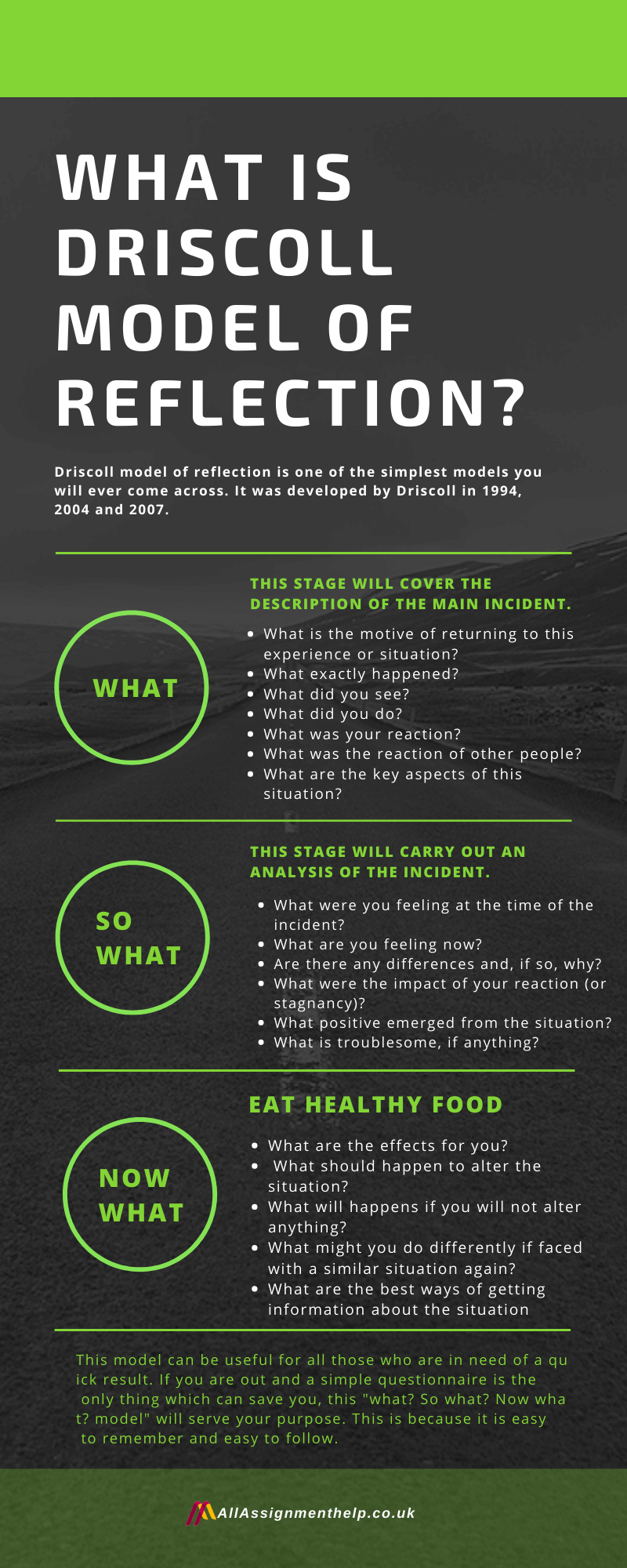
Driscoll Model of Reflection How to use this model for writing reflection
Hampshire Workforce Development Driscoll (by Borton) Model of Reflection (1994) This model focuses on 3 stem questions: "What?", "So what?" and "Now what? Matching these questions to an experiential learning cycle and adding trigger

Driscoll Model of Reflection An Intuitive Guide
Driscoll's reflective model, as the name suggests, is a model used to reflect on something. This is one of the simplest models used to remember in any nursing practice. This was developed in 1994, 2004, and 2007 by Driscoll, after whom this model is named. This model includes three phases of the experimental learning cycle.

Driscoll's Model of Reflection (Driscoll, 2007) Download Scientific Diagram
Driscoll connected these three stem questions to the stages of an experience learning cycle, and then added trigger questions that must be answered to complete the reflection cycle. The three questions were developed in 1994, 2000 and 2007. The John Driscoll Model of Reflection is one of the simplest models of reflection.

Feed Me Digital Reflective Practices
Since Driscoll's model of reflection helps to properly investigate the situation, this model is mainly used in a health care setting by nurses to provide a reflection on their experience or medical situation and to identify actions that can be taken for self-improvement and to improve the quality of care in the future.
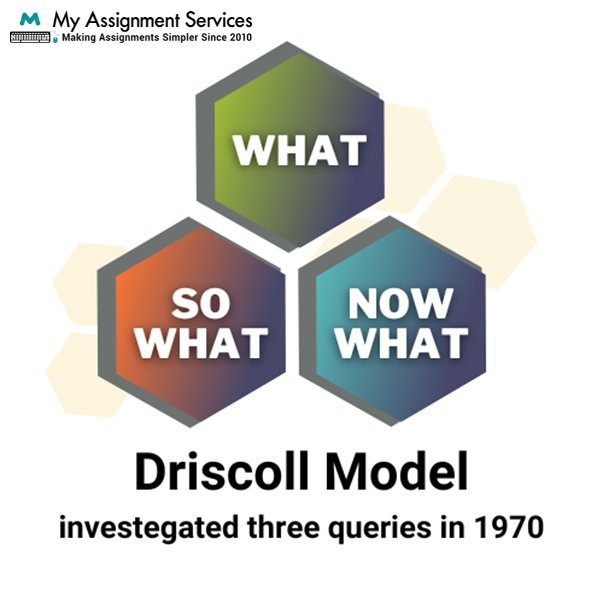
Beginner’s Guide to Writing a Reflection Essay Using the Driscoll Model of Reflection
This chapter will look more closely at one of the most common and simplest models for how to practice the kind of reflection that fosters "reflective practitioner" attitude: John Driscoll's cycle of reflection, which follows a "What, So What, Now What" process. The end of this chapter offers an example assignment based on the Driscoll.

Acts of Leadership Driscoll and Reflection
The John Driscoll Model of Reflection is a framework for reflection, developed into a structured process to guide reflection. There are several models of reflection and there isn't one right choice. It's important to choose the model that matches the person who will be using it. The John Driscoll Model of Reflection is based on the three.

Example Of Reflection Using Driscoll Model Section H Reflective Journal Reflective Practice Is
Driscoll's Model of Reflection is a widely used framework for reflective writing in healthcare professions. It consists of three stages - What, So What, and Now What - that guide individuals through the reflection process. This approach promotes ongoing learning and development by identifying improvement areas.
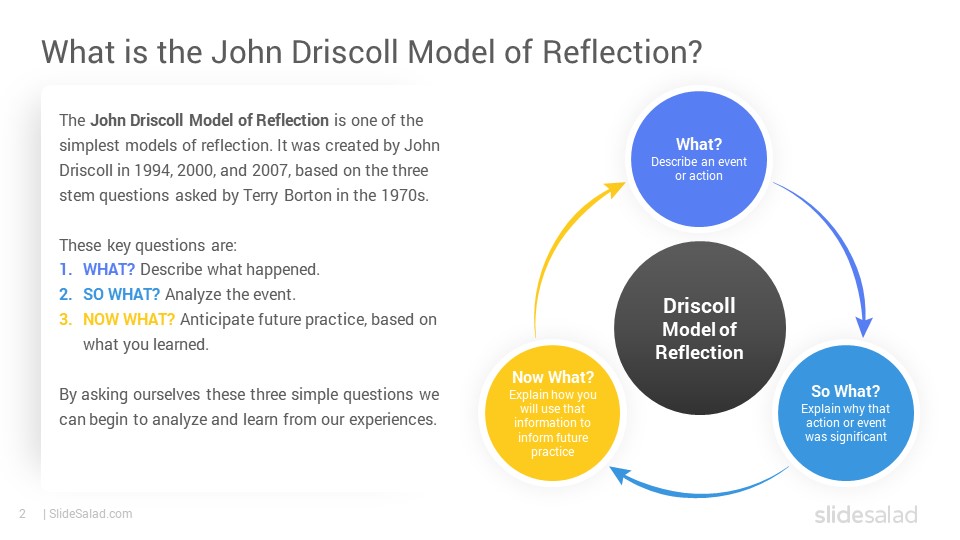
Driscoll Model of Reflection PowerPoint Template SlideSalad
Reflection and reflective practice are seen as core to professional development in many health professions, encouraging a continuous learning approach involving knowledge acquisition and practice imp.

Driscoll Reflective Model How to Use in Assignment Writing?
Models provide a framework to guide you through the steps involved in reflection. Models can be basic, like Driscoll's, which is a three step plan or much more detailed and structured such as Gibb's model, which has six steps.
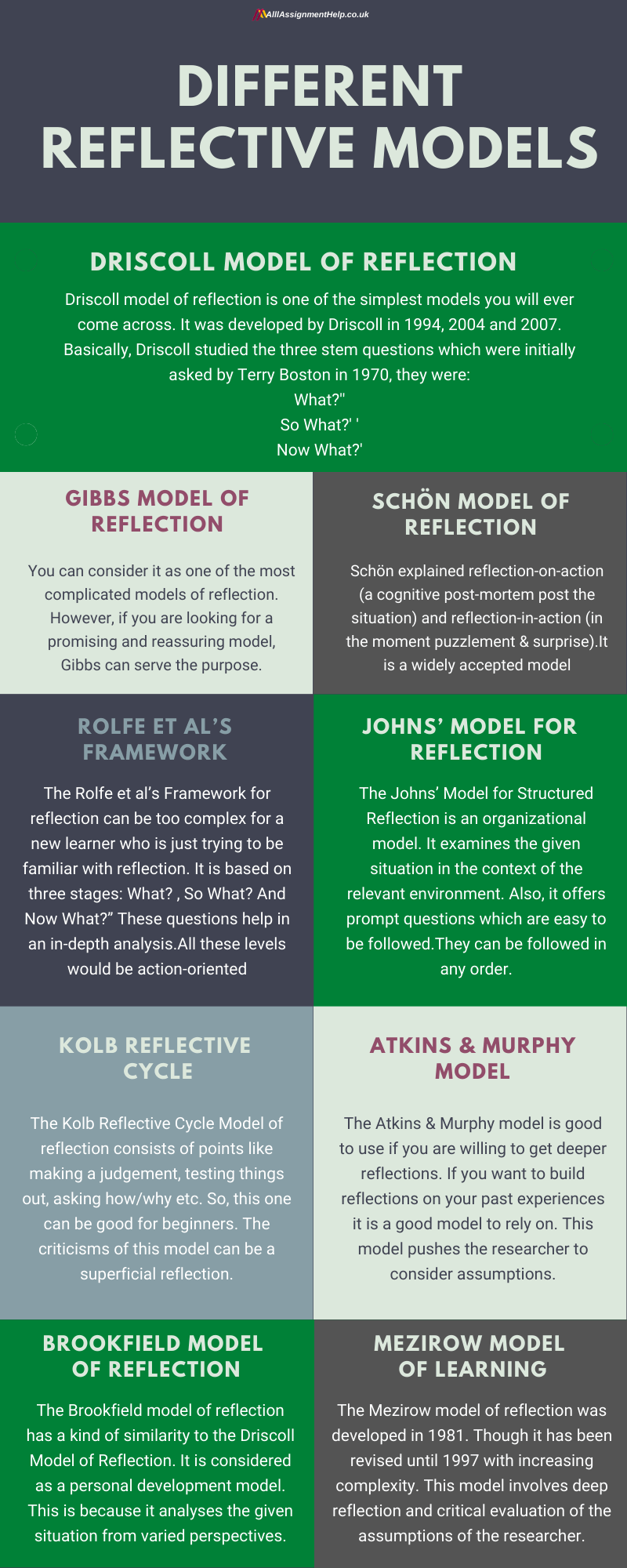
Driscoll Model of Reflection How to use this model for writing reflection
You will need to demonstrate that you recognise your current stage of ability as well as your continuing development needs. In summary, the written reflective narrative of the IACC assessment requires you to: Analyse your completed evidence in your portfolio. Synthesise what you have learnt against the five Good Scientific Practice (GSP) domains:
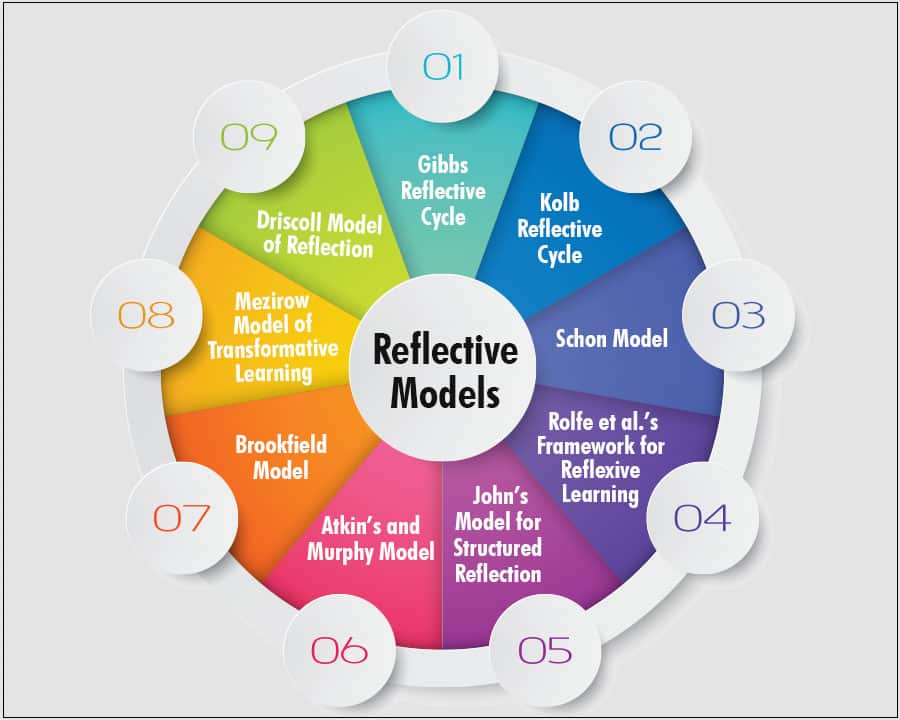
Driscoll Reflective Model How to Use in Assignment Writing? (2023)
This article explores the important activity of reflection and reflective practice. Support workers and nursing associates, as well as all healthcare professionals, have a responsibility to reflect upon their own practice, identifying not only areas of good practice but also where improvements can be made. The article starts by defining what.
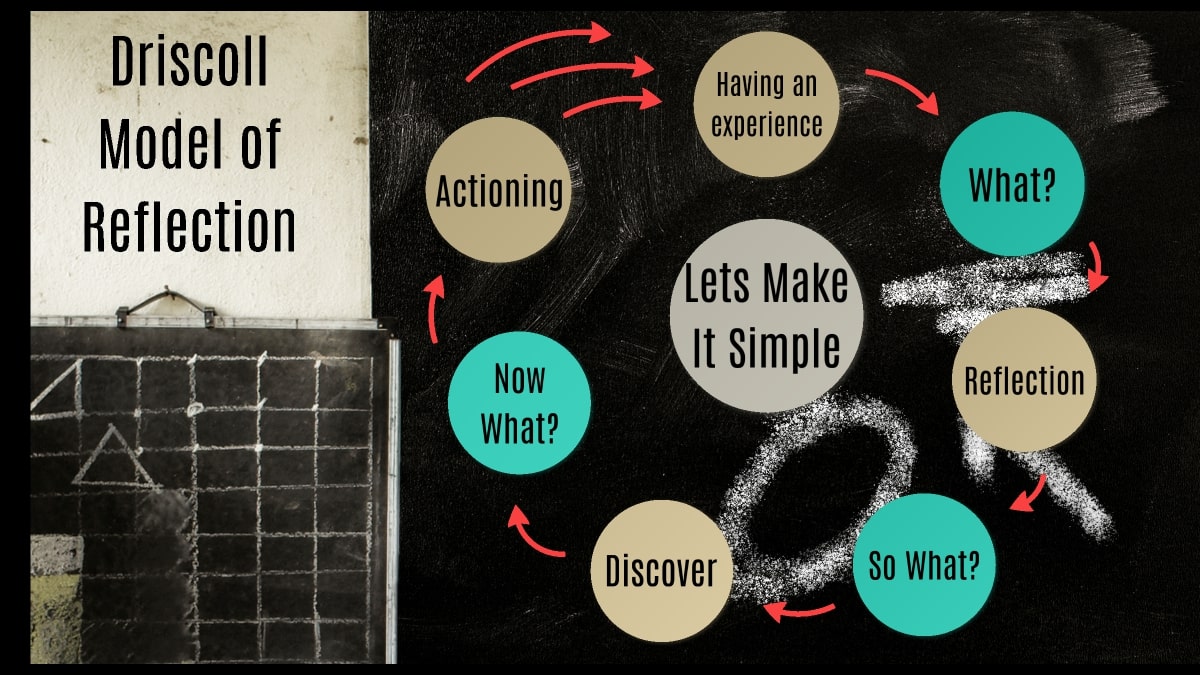
Driscoll Model of Reflection Everything You Need to Know
Driscoll's model of reflection is not the most commonly cited, however, the Driscoll model has several advantages, mainly due to its level of simplicity. The.

Driscoll Model of Reflection Google Slides Template SlideSalad
Driscoll's Model of Reflection is a powerful tool for learning from experiences and improving personal and professional development. By following the three stages of the model, you can gain insights into your thoughts, emotions, and behaviours, leading to increased self-awareness and personal growth. Reflection requires time and effort, but.
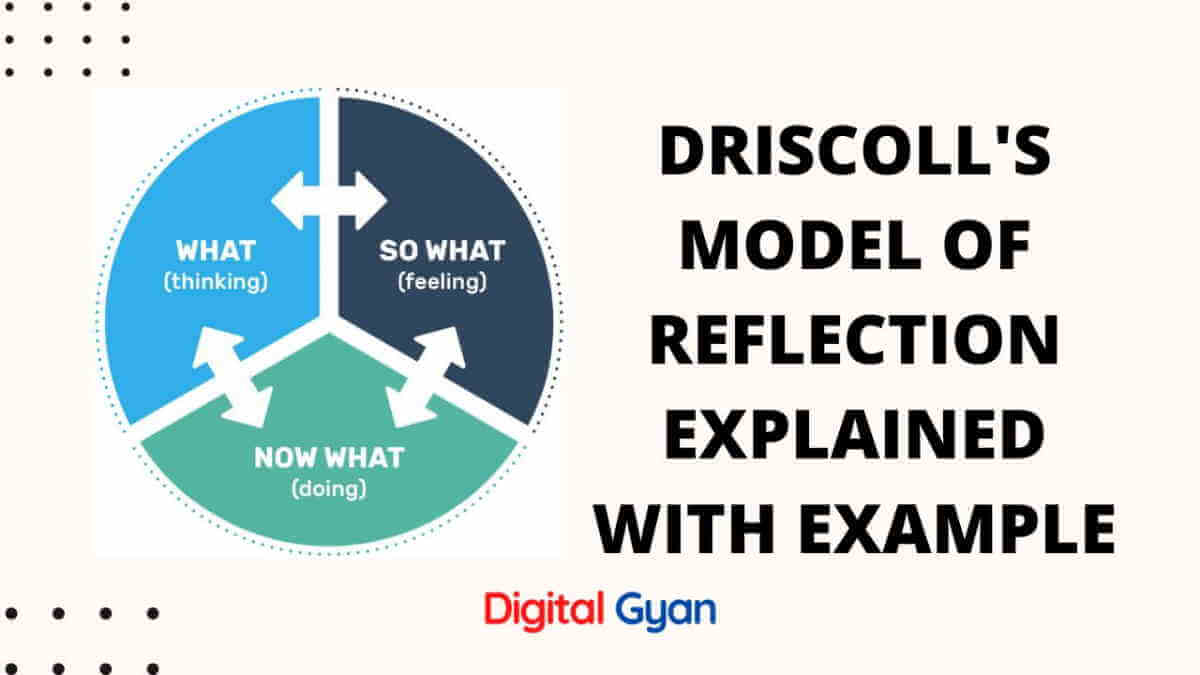
Driscoll's Model of Reflection Explained With Example Digital Gyan
Intentional reflection on work situations can lead to improved understanding of a specific situation, identify strategies for similar situations in the future, and uncover assumptions that hinder service to patrons. Research has identified lack of knowledge to be a barrier to health sciences librarians engaging in reflective practice.

Reflective practice
Gibb's Reflective Cycle. The final model builds on the other three and adds more stages. It is one of the more complex models of reflection but it may be that you find having multiple stages of the process to guide you reassuring.

Driscoll Model of Reflection Dan Jackson
Driscoll (or Borton/Driscoll) Reflective Model. This reflective model was developed by Driscoll for use by healthcare practitioners. Coincidentally, the same headings had been used by Borton in 1970 in an education setting and so it is sometimes referred to as the Borton/Driscoll model.